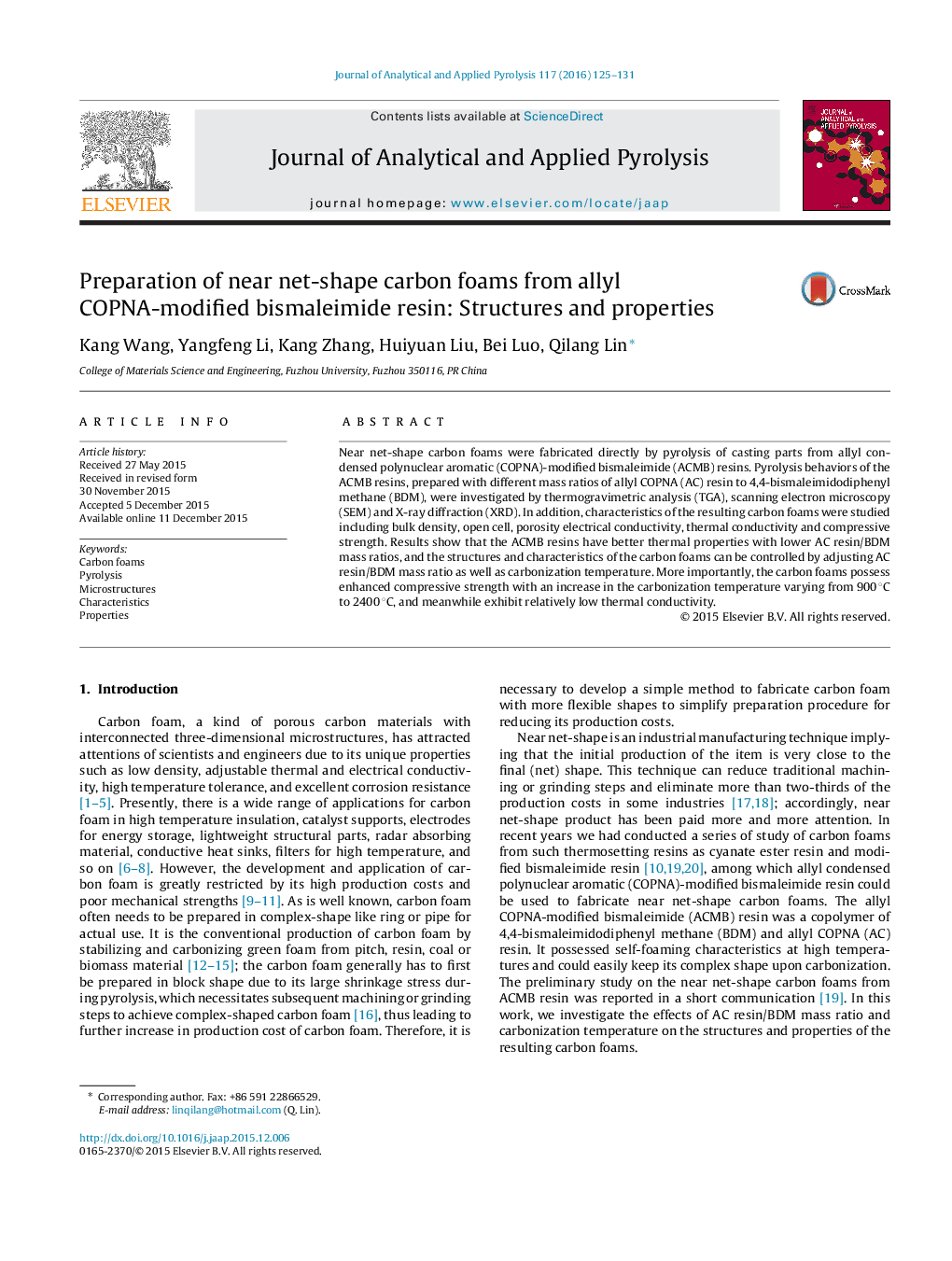| Article ID | Journal | Published Year | Pages | File Type |
|---|---|---|---|---|
| 1196622 | Journal of Analytical and Applied Pyrolysis | 2016 | 7 Pages |
•Characteristics of the carbon foams can be controlled by adjusting AC resin/BDM mass ratio.•The carbon foams possess well-developed pore structures without obvious structural defects.•The carbon foams have enhanced compressive strength with increasing carbonization temperature.•The carbon foams exhibit relatively low thermal conductivity.
Near net-shape carbon foams were fabricated directly by pyrolysis of casting parts from allyl condensed polynuclear aromatic (COPNA)-modified bismaleimide (ACMB) resins. Pyrolysis behaviors of the ACMB resins, prepared with different mass ratios of allyl COPNA (AC) resin to 4,4-bismaleimidodiphenyl methane (BDM), were investigated by thermogravimetric analysis (TGA), scanning electron microscopy (SEM) and X-ray diffraction (XRD). In addition, characteristics of the resulting carbon foams were studied including bulk density, open cell, porosity electrical conductivity, thermal conductivity and compressive strength. Results show that the ACMB resins have better thermal properties with lower AC resin/BDM mass ratios, and the structures and characteristics of the carbon foams can be controlled by adjusting AC resin/BDM mass ratio as well as carbonization temperature. More importantly, the carbon foams possess enhanced compressive strength with an increase in the carbonization temperature varying from 900 °C to 2400 °C, and meanwhile exhibit relatively low thermal conductivity.
